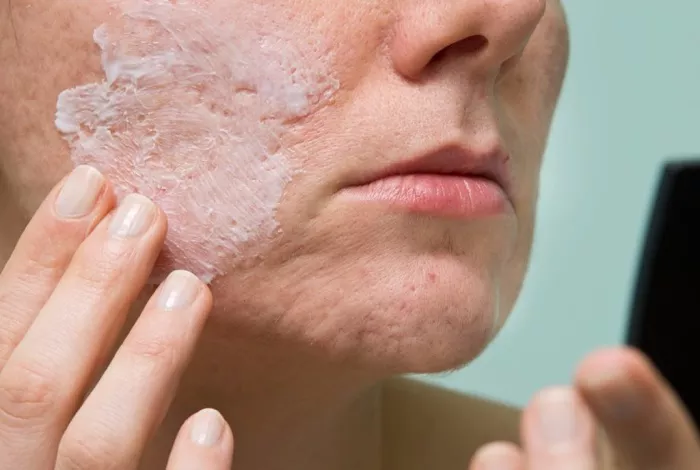Ice pick scars, a type of acne scar, can be a source of frustration and self-consciousness for many individuals. These deep, narrow scars often leave lasting reminders of past acne breakouts. Fortunately, there are several effective treatments available to help diminish the appearance of ice pick scars and restore smoother, healthier-looking skin.
Understanding Ice Pick Scars
Before delving into the best treatment options for ice pick scars, it’s crucial to understand what they are and what causes them. Ice pick scars are characterized by their narrow and deep appearance, resembling small, V-shaped pits or holes in the skin. These scars develop when acne breakouts damage the skin’s collagen and leave behind deep, narrow depressions.
1. Professional Dermatological Treatments
Dermabrasion and Microdermabrasion: Dermabrasion and microdermabrasion are two popular treatments for ice pick scars. Dermabrasion involves the removal of the top layer of skin, while microdermabrasion uses tiny crystals to exfoliate the skin’s surface. Both procedures promote skin regeneration and can help improve the appearance of ice pick scars over time.
Chemical Peels: Chemical peels involve applying a chemical solution to the skin, which causes it to peel and eventually regenerate. These peels can be tailored to the specific needs of the individual, making them a versatile option for treating ice pick scars. They work by stimulating collagen production and promoting the growth of new, smoother skin.
Laser Resurfacing: Laser treatments, such as fractional laser therapy, can be highly effective in treating ice pick scars. These lasers target the damaged skin, stimulating collagen production and promoting skin renewal. The result is a smoother and more even skin texture, reducing the visibility of ice pick scars.
Microneedling: Microneedling is a minimally invasive procedure that involves using a device with fine needles to create tiny punctures in the skin. These micro-injuries trigger the body’s natural healing process, leading to increased collagen production and skin regeneration. Microneedling can be particularly beneficial for improving the appearance of ice pick scars.
2. Topical Treatments
Retinoid Creams: Retinoids, such as tretinoin, are topical medications that can help improve the appearance of ice pick scars. They work by stimulating collagen production and promoting cell turnover, leading to smoother and more even skin. However, they may take several months to show noticeable results.
Topical Silicone Gel: Silicone gel sheets or creams can be applied directly to ice pick scars to help soften and flatten them. These products create a barrier that helps improve the scar’s texture and appearance over time. Regular and consistent use is essential for optimal results.
3. Home Remedies and Over-the-Counter Treatments
Exfoliation: Regular exfoliation with a gentle scrub or exfoliating cleanser can help improve the appearance of ice pick scars by removing dead skin cells and promoting skin renewal. Be cautious not to over-exfoliate, as this can irritate the skin.
Scar Creams: Over-the-counter scar creams often contain ingredients like vitamin E, aloe vera, and onion extract, which can help reduce the appearance of ice pick scars. While these products may offer some improvement, they are generally less potent than prescription treatments.
Sun Protection: Protecting your skin from the sun is essential when trying to fade ice pick scars. Sun exposure can worsen the appearance of scars and make them more noticeable. Always use sunscreen with a high SPF when going outside.
4. Combination Therapies
Combination Approaches: In many cases, a combination of treatments may yield the best results for ice pick scars. Dermatologists often recommend combining professional treatments like laser therapy or microneedling with topical treatments like retinoids or silicone gel for more comprehensive and effective scar reduction.
The Importance of Consultation
Before pursuing any treatment for ice pick scars, it’s crucial to consult with a dermatologist or skincare professional. They can assess your specific skin type and the severity of your scars, tailoring a treatment plan to your individual needs. Additionally, they can provide guidance on post-treatment care and maintenance.
Conclusion
Ice pick scars can be a challenging issue to address, but with the right treatments and skincare regimen, significant improvement is possible. Professional dermatological treatments such as dermabrasion, chemical peels, and laser resurfacing offer effective solutions for reducing the appearance of ice pick scars. Topical treatments like retinoids and silicone gel, as well as home remedies and sun protection, can also contribute to scar improvement. For the best results, consider consulting a dermatologist who can recommend a personalized treatment plan tailored to your specific needs. Remember that consistent and patient care is key when working towards smoother, scar-free skin.
[inline_related_posts title=”You Might Be Interested In” title_align=”left” style=”list” number=”6″ align=”none” ids=”2543,2359,2392″ by=”categories” orderby=”rand” order=”DESC” hide_thumb=”no” thumb_right=”no” views=”no” date=”yes” grid_columns=”2″ post_type=”” tax=””]



































